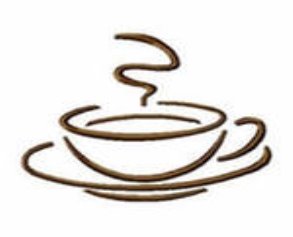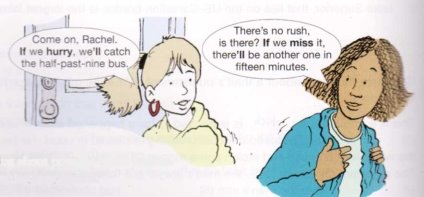Урок "Food institutions"
- Warming up.
Good morning! I am glad to see you. I hope you are well today.
Recently I’ve seen an interesting expression in the Internet. Here it is:
“One should eat to live, not live to eat”. (Moliere)
What do you think? Do you agree or not? I’d like you to express your ideas using the phrases:
HO 1.
|
Agreeing |
Disagreeing |
|
Yes, I agree (with you)… |
I’m afraid I disagree. |
|
I completely agree… |
I’m not sure about that. |
|
That’s true. |
I disagree… |
|
I’m with you there. |
I agree to some extent, but… |
Pupils express their ideas.
|
Possible answers:
|
- The main part.
So as you’ve already understood our topic today is food in general and food institutions in particular.
- What food institutions do you know? Let’s make a mind-map.
A mind-map


![]()
![]()

![]()
![]()
![]()

![]()
![]()
![]()

![]()
![]()


![]()
![]()

![]()
![]()

![]()

![]()
![]()
![]()


![]()
![]()
- Match the type of food establishment with its description.
HO 2
|
|
|
|
|
|
|
|
|
|
|
|
|
|
|
|
|
Key to the exercise:
|
- Pre-reading activities.
What are Greasy Spoons? Do you have any idea? Give your associations. Pupils give their ideas.
|
Possible ideas:
|
Read the poem “Extra-gross menu” by Danielle Cook. Where your ideas right or not? (The poem is given on a separate sheet of paper)
Read the article in exercise 4 quickly and find the answer to the given question.
Pupils look through the article to find the answer.
|
What are Greasy Spoons?
Greasy spoons mean a small, especially cheap, archetypal working class restaurant or café where very fat, full of empty calories food is served.
|
Using the table in HO 2 define what kind of restaurant is it? Prove it, please.
|
What kind of restaurant is “Greasy Spoons”? Prove it.
It’s a fast food restaurant.
“More calories can be found in a cup of tea in a good greasy spoon than in a whole meal at a normal restaurant”.
“The meals here are dangerously unhealthy, and absolutely delicious. All kinds of fried food can be bought for incredibly low prices”.
|
Read the article in exercise 4 again. What is it about?
(Ex 1 p. 28)
|
a). The aricle is about a very typical British institution.
(The article ia about the cafes, and although it mentions both unhealthy food and the English breakfast, it doesn’t tell us about these things in detail.)
|
Read the following extracts from the text. What do you think the underlined words and phrases mean? Work out their meaning from the context (without using a dictionary).
(Ex.2 p.28)
|
Key to the exercise:
(Think about what the image suddests. When someone is on their knees, it means the have been defeated.)
(All the things mentioned are food.)
(The list of people that follows the phrase is a clue.)
|
Decide which of phrases 1-8 below (taken from the article have a positive (+) and which have a negative (-) meaning. Write + or -.
(Ex. 3 p. 28)
|
Key to the exercise:
(Although this is subjective. Some people may not like having too much choice.)
(But people may find cracked linoleum charmingly old-fashioned.)
|
- Reading and exercises.
Read the article about “greasy spoons”. Then complete statements 1-5 with the best ending: a, b, c, or d.
|
Key to the exercise:
(We read “they are an essential part of life in the UK? Especially for people living in bigger cities.)
(We read “they usually have… a huge menu offering a wide variety of delights”.)
(We read “In a typical greasy spoon, you will find people from all walks of life”.)
(We read “`you have to be really brave to eat it first thing in the morning, because it is huge”.)
(We read “nothing can beat the real thing” (nothing can be better than the real greasy spoon cafes). This sentence sums up the writer’s opinion, which is very positive.)
|
- Post-reading activities.
Group work.
Split into two groups. Group #1 is going to put down positive aspects of eating in “Greasy spoons”.
Group #2 is going to put down all negative aspects on this point.
Pupils work in groups.
|
Possible answers: |
|
|
Positive +
|
Negative –
|
- Discussion.
- And now I’d like you to discuss your suggestions. You are to use the First Conditional and useful phrases, of course.
Firstly, pupils revise the rules of using the First Conditional.
Table 1.
|
The First Conditional
If + Present Simple; + will; Present Continuous; modal verb Present Perfect
Note: We can use will in the if-clause when we make a request.
If you’ll just wait a moment, I’ll find someone to help you.
|
HO 3
|
Expressing opinions
|
Pupils begin doing the work in turn.
|
Possible answers:
|
- Now be ready to comment on the situations using the First Conditional.
HO 4
|
Comment on the situation.
If it rains, evertone can eat inside.
|
|
Key to the exercise:
2. If you like specific dedicated meal courses, you should go to a fine restaurant. 3. If you are very tired, you may visit a coffeehouse. 4. If you’re as hungry as a hunter, go to the nearest greasy food. 5. If I drink coffee late at night, I can’t sleep. 6. If you’re overweight, you will keep to a diet.
|
- Summing up the results.
Well done! So, today we have discussed different kinds of food institutions, their positive and negative points. You all worked well. Your marks are…
- Hometask.
You hometask will be:
- Find more famous quotes about food. Be ready to explain their meaning.
- Do Ex/s A, B, C p.347 (OPG).
Unit: Shops and services.
Topic: Food establishments.
Level B1
Мета:
- Повторити та активізувати вживання попередньо вивчених лексичних одиниць по темі.
- Практикувати у роботі з автентичним матеріалом.
- Вчити отримувати та користуватися необхідною інформацією.
- Вчити реагувати на репліки співрозмовника, висловлюючи згоду чи незгоду стверджувальними та заперечними висловлюваннями.
- Практикувати в утворенні та вживанні the First Conditional.
Обладнання: підручник “Exam Excellence”, handouts, картинки.

Extra-gross Menu by Danielle Cook
I went to a restaurant
Called Nick's Greasy Grill.
I sat down at my table
and my waiter's name was Bill.
He gave me a fresh new menu
and gave me slimy bread.
He said that it was nothing
because he would talk to the chef named Ted.
He walked away slowly as I looked at the menu.
They had things like slimy snail spaghetti and super garbage stew!
Also they had rabbit legs with or without fur,
and the rest really, really was nastier!
Now eating there I have no intention,
To me Nick's Greasy Grill please do not mention!


про публікацію авторської розробки
Додати розробку

